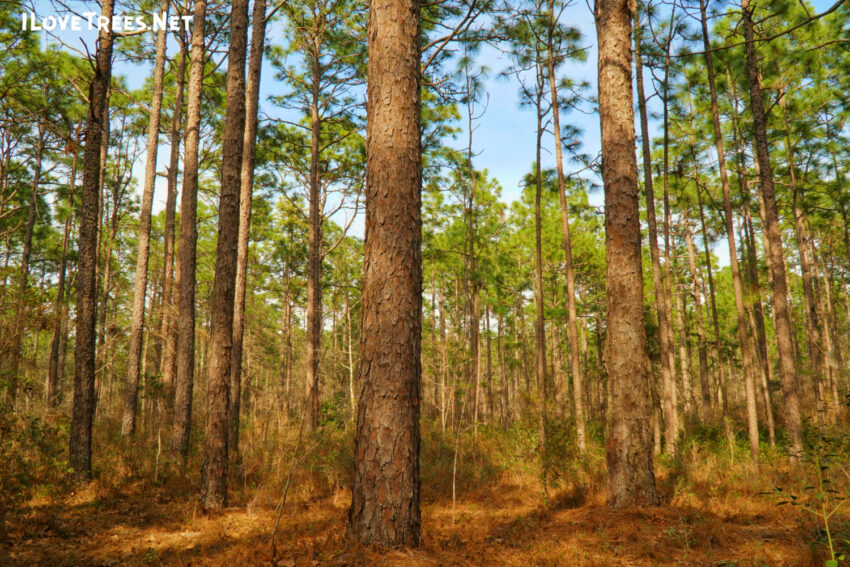On the southeastern side of UNCW is an outstanding small parcel of old-growth longleaf pine forest. It is arguably far thicker, more dense, and more wild than any other longleaf stand in our area. Narrow bike trails meander through the forest, but it has otherwise been left alone. There are old trees, middle-aged trees, young ones, and seedlings. Grasses and oaks grow in between, as indicative of a native longleaf savannah. Pine needles (those extra “long” longleaf needles) form a thick amber carpet underfoot. The puzzle-piece scales of bark shine in the setting sun. And the tell-tale massive longleaf pine cones abound. I stop and stare in wonder while squirrels and songbirds rustle around in the understory and wildflowers bud and open. I pause and try to imagine what it must have been like when the first people saw a forest like this, a forest extending out from my view, seemingly endless. That’s what it was to them – endless. But it was not. There’s just this tiny patch left now and some other pockets elsewhere. After a very short stroll you can see campus buildings and massive parking lots (and you can hear them all the while). Barely after entering the forest, you find yourself right back in the clear-cut land of roads and buildings. This forest is one of the last remaining old-growth patches of longleaf pine. And UNCW is cutting it down.
I’m not sure how long this unprotected stand of native longleaf pine will last because UNCW has been steadily destroying it. With so little left, it’s completely baffling that we wouldn’t be falling all over ourselves to protect it. It’s incomprehensible that we fail to understand the true cost of what we do. We put up with having such little green space and barely any original forest at all, and definitely no uncut wilderness. We get used to seeing only buildings and parking lots. We get used to hearing only traffic and leaf blowers. We have no realization of how much more beautiful our world could be. We hardly know what we are missing. And it seems to become stronger every day that we go without. But we must be starving inside. We must be struggling intensely to repress our desire to be wild and free. We must be making every effort to suppress our desire to feel connected to our world. We surround ourselves with a synthetic facade of plastic, gadgetry, and artificial light. We rarely step out into the forest. It’s a place we don’t understand. Most of us can’t even name a dozen trees. Most of us are unable to appreciate the quiet. Most of us no longer live in genuine reality. We are manufactured, even down to what we believe.
This forest, this “Longleaf Nature Park” (since UNCW won’t bother to name it) is the ultimate epitome of a local natural and cultural treasure. It is beyond belief that this forest is not yet a completely protected and highly celebrated area. Longleaf pine is a threatened species and old-growth patches like this one are truly unique. How UNCW, the city of Wilmington, and New Hanover County haven’t jumped all over the opportunity to extol its virtues is a complete mystery.
There are multiple access points to this forest, but I parked in Lot EE (currently no pass required) and walked into an open sandy area. I spotted a tiny waterfall and then walked to the right to cross a little bridge. I walked among sweet gum, dogwood, magnolia, ironwood, maple, and black cherry. Next I crossed a wide sandy track (presumably a fire road) and re-entered the woods. I was immediately engulfed in native longleaf pine forest. I continued through, following whichever path I fancied. The trail was usually open, but also tunnel-like at times with tall understory. The longleaf pines dominated the forest, numbering more than I’d seen in other nearby places, and they were more dense and diverse in age. I even found a small patch of babies in the wiregrass. After soaking in this most impressive native forest, I eventually returned the way I came in. For more information visit: http://sirbikesalot.com/entry.php?fid=58.
![]() About the Author:
About the Author:
Sue Cag is a musician, artist, writer, photographer, and nature preservationist.
All photos by Sue Cag. All Rights Reserved. Photos and video may not be used without permission.
UNCW Bulldozes Old-Growth Forest and Bike Trails
All photos by Sue Cag and Kim Dicso. All Rights Reserved. Photos may not be used without permission.


